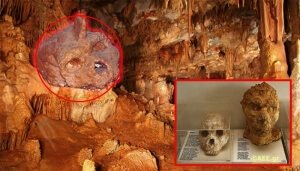Ceres is a dwarf planet from our solar system which holds more questions than answers. Scientists can’t even study one discovery before stumbling upon the next, bigger one.
It all began when a spacecraft called Dawn took pictures of spots with intense luminosity on the planet’s surface, lights that haven’t been explained to this day.
UFOlogists, scientists and even simple curious people have all been trying to come up with theories on the matter, even comparing the view from space of large modern day cities on our planet to the photos taken on Ceres. When paired, the two look strikingly similar, but scientist say that, while it’s not out of the question there can be another civilization, the photos hold no evidence whatsoever that there actually is. The pictures aren’t conclusive enough, and the human eyes might also see what the mind wants them to.
While everybody was busy launching theories and debating them, an even bigger find occurred on the dwarf planet. In an open, desert-like area, holding no natural rock structures, a structure resembling a pyramid was discovered. NASA then combined shots taken from Dawn during a period of 3 months to create a high-res, HD map of the planet’s poles.
The map shows a 20 km wide mountain and a vast amount of craters, but also a gigantic dark zone that has worried or at least confused scientists worldwide.
On the Official NASA website, two craters are identified in the vicinity of this pitch black area, named Zaddeni and Atlas. There is also a statement claiming Ceres’ South Pole is under complete darkness and has been so since March, when the spacecraft first started orbiting the mysterious planet.
But this might not be that strange at all. We tend to think of other planets, stars (suns) and their particularities as similar to Earth and its sun, but this is most often not the case. The sun shedding light on Ceres might be so distant and placed so asymmetrically that the spacecraft itself is blocking its own cameras from receiving any light.(like trying to take a picture with no light, inside a closet).
This theory is also supported by the fact that the North pole, weirdly, is almost perfectly illuminated, like a sports arena. This region holds the Ysolo Mons, a large mountain neighbored by many craters, most being considerable in size as well.
The closet theory we came up with is not very popular at a global level though, as many are firmly convinced that the shadow covering the south pole of Ceres is artificial, which means someone (like NASA) or something (like an advanced alien race) is trying to hide something very important, like the possible entrance to an underground military base, city, or as some extreme believers claim, a universal information collecting center (kind of like the universe’s archive).
However, these extreme theorists are backed by the fact that no object or form of life has been seen entering or existing the area in the period in which Dawn has been orbiting it. This would be almost impossible if it was a military base or inhabitable area.
NASA has only begun studying Ceres, so you can only imagine what discoveries and puzzles await in the near future. In the meantime, what’s your theory? Maybe you’re claustrophobic and hate closets. Tell us…











